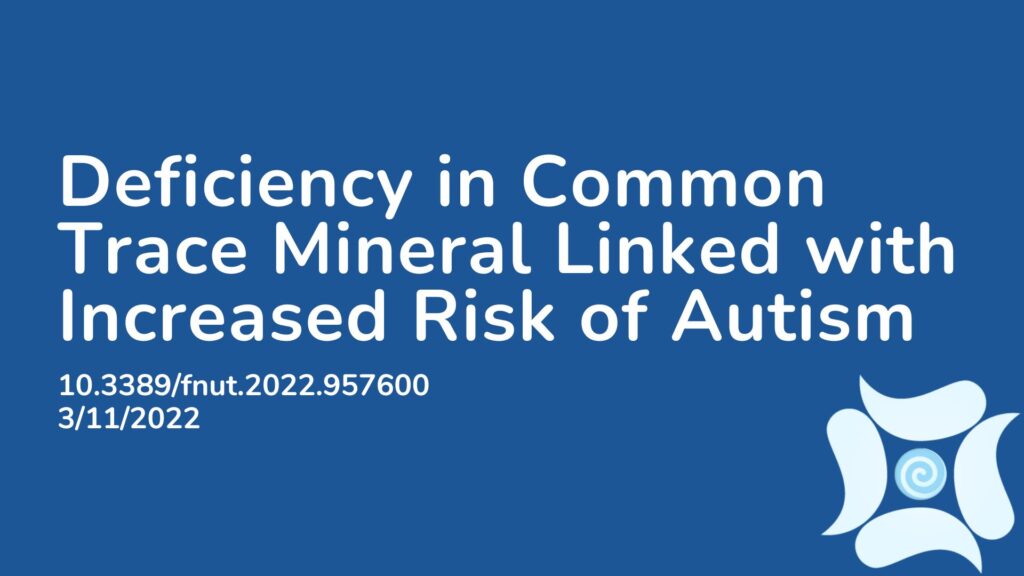Summary:
Autism spectrum disorder (ASD) is as a neuro-developmental condition which can display as difficulties in communication, social interaction, speech, and repetitive behaviors. Approximately one in 44 children in the United States are affected by autism, with signs often showing as early as 24 months of age. While the exact cause of autism remains largely elusive, it is theorized that a combination of genetic predisposition, and environmental factors significantly contribute to its development. Research has also shown that imbalances in trace elements such as iron, copper, zinc, selenium, nickel, manganese, and aluminum, are closely linked to the risk of autism. Iron in particular has been the most researched, however the precise mechanism or relationship remains unclear. To investigate this further, this study looked at serum iron, ferritin, transferrin levels, and transferrin saturation in autistic children. The results showed there was a significant correlation between serum transferrin level and increased autism risk, however not for serum iron, ferritin, or transferrin saturation and autism. The authors concluded that increased serum transferrin levels may be linked to a higher risk of autism, implicating a potential role of iron deficiency in autism development. Further research is necessary to elucidate the underlying mechanisms, which may promise new avenues for autism prevention and treatment.
Abstract:
Emerging evidence indicates a connection between serum iron levels and autism, but the underlying causal association is yet unclear. Thus, we performed two-sample Mendelian randomization (MR) analysis to evaluate the causal link between iron status on autism, using genetic instruments (p < 5E–08) strongly associated with iron status (N = 48,972), including serum iron, ferritin, transferrin levels, and transferrin saturation. Summary statistics of autism was obtained from two independent studies conducted by Psychiatric Genomics Consortium (PGC, Ncases = 5,305, Ncontrols = 5,305) and FinnGen Consortium (FC, Round six, Ncases = 344, Ncontrols = 258,095), respectively. Using the inverse-variance weighted (IVW) method, the combined results of PGC and FC demonstrated that genetically determined serum transferrin level was significantly associated with an increased risk of autism [odds ratio (OR) = 1.16, 95% CI: 1.03–1.30, p = 0.013]. There was no significant causal effect of serum iron (OR = 0.99, 95% CI: 0.72–1.37, p = 0.951), ferritin (OR = 0.88, 95% CI: 0.47–1.64, p = 0.676), and transferrin saturation (OR = 0.89, 95% CI: 0.72–1.09, p = 0.252) on autism. No obvious pleiotropy was found in this MR study. Taken together, our findings highlight that elevation of serum transferrin level might be associated with a high risk of autism, suggesting a potential role of iron deficiency in autism development. Future studies are warranted to clarify the underlying mechanism, which will pave a new path for the prevention and treatment of autism.
Article Publication Date: 3/11/2022
DOI: 10.3389/fnut.2022.957600




